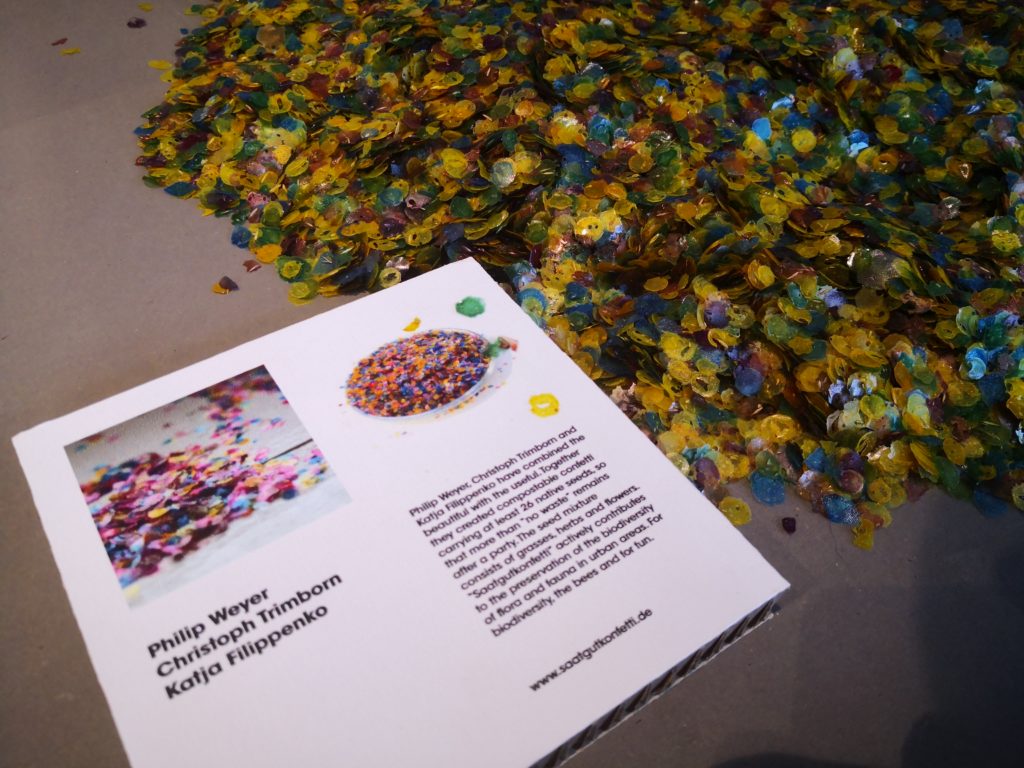Graduation show

Those “electrical parasites” created by Yiqian Bao -that reminds me the replicants from Stargates SG1- are objects designed to collect and convert heat waste energy into free power that can be used to charge various devices. It’s also a way to visualize this unseen waste and inspire manufacturers to improve their products.

“The cookie network” by Niek van Sleeuwen is a simple addon that helps people visualize the hidden infrastructure that enables companies to track them with cookie technology.

On the next building we could find the last projects from Foundation We Are, a group of alumni from Design Academy Eindhoven questionning societal issues. Their last project invited visitors to send a letter to the newly elected members of the European Parliament. The letter reminds to the members their role of designing the EU, while doing advocacy for the value and impact design has for governmental systems.
Antenna Expo
The Antenna expo showcased the “world’s best design graduates”. Generally reluctant to this kind of title, I was finally happily surprised when discovering the projects.


“When No One Believes You” is a kit assistant for raped victims created by Antya Waegemann. It includes six different design interventions for use by victims, nurses and police. The end goal is to increase report rates and improve the experience of having to use a rape kit. The project also reminds that “in the US someone is sexually assaulted every 92 seconds, and only 30% of sexual assault victims report the crime”.

Department For Inclusive Education (DFIE) by Jack Newbury seeks to create inclusivity and equality in sexual education with his Inclusive Sexual Education kit that tackles the heteronormativity that surrounds sexual education.
New materials
Eindhoven often showcases projects around materials: new materials, bio-materials, reused material, … and this year again the thematic is bringing our imaginary to a more sustainable future.

“Saatgutkonfetti” are compostable confettis carrying more than 26 native seeds of grasses, herbs and flowers.

Some projects show the potential of mycelium, like the growing pavilion. These living materials have a much faster regenerating rate which make them quite an interesting when it comes to future thinking.

Another project tried to reuse the infamous bauxite/red mud that comes from the alumina industry. We can find a lot of it in South of France (called “boues rouges”) and the website reminds us that 150 million tons are produced every year. A reminder that every material, specially waste materials, have characteristics that might be good for a specific use.
There were much more work of course, feel free to visit the Dutch Design Week program if you are more curious.
Sinn Aesthetik

I appreciated a lot the creativity and innovation of Sinn Aesthetik:
– The development of biodegradable new materials from food wastes by Youyang Song to produce leather-like materials that provide similar toughnesss, durability and water resistance while also providing various manufacturing options.
– A printing machine by Madeleine Marquardt which uses light as a drawing tool for patterning on textiles (picture).
Driving Dutch Design



Talks

